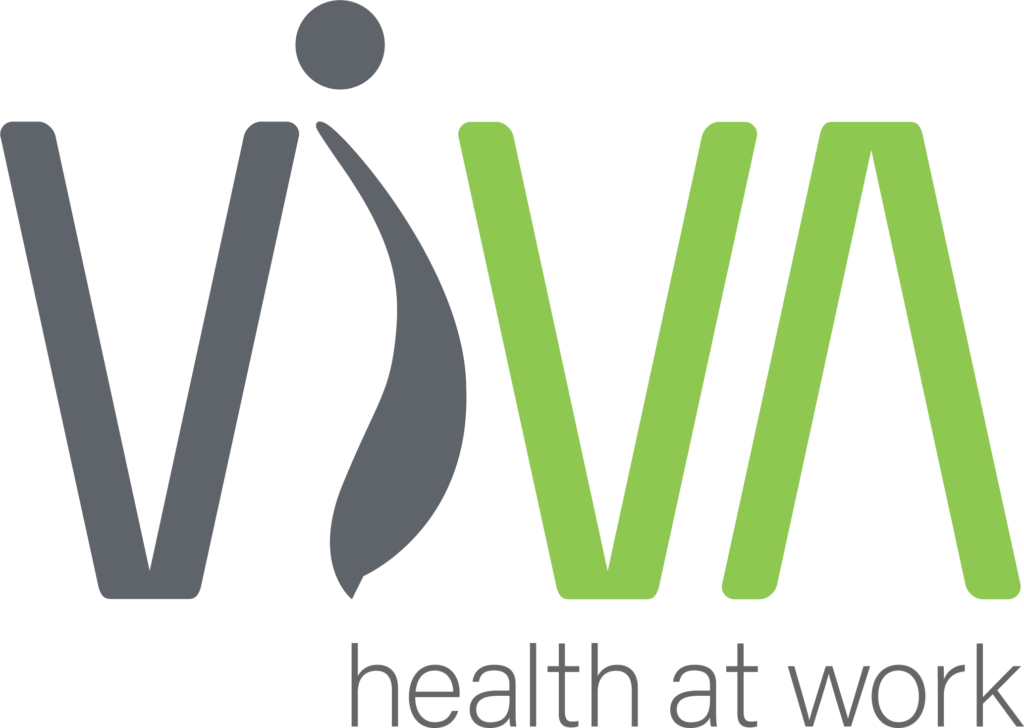
Occupational Salutogenesis focuses on work and work systems that support health, well-being, productivity, and sustainability, rather than the factors that cause disease, illness, and injury (a pathogenic approach)[i], [ii]. A salutogenesis model in the instance of work implies a transactional relationship among workers, managers, tasks, and the environment, in which design affordances can provide for meaning, comprehensibility, and manageability[iii]. Salutogenics is the study of what maintains health; different to treatment, it is not a quick or simple intervention, but reflects the foundation of what must be required to support, promote, and sustain good health[iv], [v]. The ontology and approaches are not fully embraced by guidance material for good work design or applied in traditional safety management systems: they advance ideation to enable design and design-thinking versus the mindset of containment or regulatory control. The methods encourage dreaming that is far removed from the machinations expected within a rigidly hierarchical work system. While this concept of designing work for health is well-rooted in ergonomics practices[vi], [vii], [viii], [ix], it is a also sentiment emerging in safety management sciences (e.g. Safety I and II)[x] when systems thinking is applied to provide for success under varying conditions as often as possible.
The work environment, by its nature and design, should provide a forum in which workers may be most likely to make safe and healthful choices and employ safe work tactics[xi]. This dictate underpins the philosophies of Total Worker Health® (TWH)[xii], [xiii], [xiv]. The emphasis is on changing the work environment, tasks performed, and equipment, not changing the worker. Flexibility in work design is one method to empower workers, as is providing role clarity and enabling workers to focus on tasks most critical to high-performance[xv]. TWH advocates a co-design approach with collaboration of design specialists, employers, and workers, to develop inclusive, safe, and healthful workplaces and conditions.
An organisational systems approach to the design of work is a pre-condition to the achievement of effective outcomes within a workplace health agenda[xvi], [xvii], [xviii]. Health may extend beyond that of individual workers to the health of team dynamics and the organisation, its goodwill and reputation, social justice, sustainability practices, and business objectives. Organisational interventionists posit that to promote health and achieve organisational high-performance, changing the nature of the work and conditions of the workplace addresses sources of stress: it is preventive[xix]. However, implementation of an organisational-level intervention is a complex and difficult undertaking[xx]. To elevate and sustain good work design, the value must be conveyed through business improvement activities; a focus need be on change-readiness and decision-support systems, and design thinking and strategies must be well developed. Good work design strategists may position their framework within operations with full embrace of design capability, using design language and parameters (e.g. affordances, constraints, signifiers, and mental models)[xxi] and, as a secondary measure, translate this to a variety of stakeholders using language for business analysts, safety professionals, workforce strategy, procurement, engineering, health and wellness or rehabilitation coordinators, and training managers.
It is important to explore key factors for success in the implementation of good work design, per a human-centred approach. To do so, we must engage in thought and discussion about how organisations may achieve good work design. That is,
What tools, practices, activities, structures, systems, conditions, and culture are required to achieve human-centred work?
A capability model for good work design has been examined through research studies. Case studies and program review were presented that conveyed elements of these key messages[xxii]:
Humans-in-Design: Participative Ergonomics:
Good work design is vital to organisational (and, likely, industry) performance
- Well-designed work meets worker capability yet challenges new thinking and is physically conditioning. It provides for a productive, healthful, and inspired workforce.
- Quality task (re)design conveys social justice; it respects workers
- Worker involvement inspires creativity, innovation, and engagement
Design-thinking is essential to business improvement
- Design-thinking is opportunity-based
- Traditional risk-based safety management systems do not provide adequate leverage for effective task (re)design
- The challenges to embed design-based thinking in organisations may be significant
Humans-in-Design: Human-Centred Design:
Predictive, human-centred design methods can optimise work performance
- Our most expensive capital investments can be costlier without human-centred considerations
- Hazards can be managed, and productivity enhanced, through design-thinking
- Task-based hazard reporting provides meaningful and useful information to leverage work improvement
A human-centred approach provides for design-based work strategies
- Management practices are an influential factor as to whether structured design processes are undertaken
- Design tools, instructions, and methods are only valuable if operationalised
- Effective design may require flexible approaches
Decision-Making in Work Design:
Decisions reflect belief systems, so it is important to examine them if a human-centred mindset is desired
- Transparent decision-making can aid communication, build consensus, and defend actions supporting task (re)design
- Projects that can be addressed by a low-cost, easy solution, and are readily implemented, may simplify the decision-making process, and fortify an early-stage ergonomics program
- Without an ergonomics specialist at the helm of essential (re)design projects, a tactical approach to good work design is unlikely
Organisational Strategies that Support Good Work Design:
Considerable effort must be harnessed, driven by shared beliefs and values, for good work design to prevail in a resilient and systematic manner
- Lead indicators provide metrics to drive task (re)design
- Optimum performance requires internal examination and continuous improvement
- Transformational activity (leadership, change-readiness, and design-thinking) is more important to tender innovation than budget, risk management, and reporting systems
Three pillars for good work design include:
- Risk management and business improvement strategy
- Action-readiness and decision-making
- Design thinking, strategy, and practice
Capability Model of Good Work Design:
Ergonomics project success is highly likely: it is worth doing something rather than nothing
- Projects that occur within a well-led, capable design program are far more likely to achieve significant success[1].
- Project success is best determined by levels of business improvement, productivity, and health; program capability is best determined by leadership, task-focused work descriptions, cost-benefit analysis, and health improvement outcomes.
Comfort may be derived from doing “just enough” to meet ethical and legal work obligations; stand-out organisations continually strive to do better
- Establishment of lead-indicators, celebration and communication of success, and broad outcome evaluations are suggestive of a highly-capable program.
- The advancement of a project requires different skills, resources, tools, capabilities, and activities than the advancement of a program; knowing this difference may help target service delivery and inform an educational framework.
[1] A research study with questionnaire investigation with subject matter experts revealed that significant success of work design projects was six times more likely in a high-capability program (Pazell, 2018)
Sara Pazell, BAppSci(OT), MBA, PhD, CPE, is the principal work design strategist in a consultancy practice that she pioneered. She is affiliated with several Australian universities and service, product, or training organisations. These opinions reflect no other organisation with whom Sara has an affiliation; the ideas, concepts, and opinions are wholly Sara’s (influenced, of course, by the many scholars and teachers from whom Sara has been blessed to learn and sometimes wrangle with intellectually).
[i] Antonovsky, A. (1979). Health, Stress and Coping. San Francisco, CA: Josey-Bass.
[ii] Golembiewski, J. A. (2012). Salutogenic design: The neural basis for health promoting environments. World Health Design Scientific Review, 5(4), 62 – 68.
[iii] Golembiewski, J. A. (2010). Start making sense: Applying a salutogenic model to architectural design for psychiatric care. Facilities, 28(3/4), 100 – 117.
[iv] Golembiewski, J. A. (2012). Salutogenic design: The neural basis for health promoting environments. World Health Design Scientific Review, 5(4), 62 – 68.
[v] Golembiewski, J. A. (2010). Start making sense: Applying a salutogenic model to architectural design for psychiatric care. Facilities, 28(3/4), 100 – 117.
[vi] Horberry, T., J., Burgess-Limerick, R., & Steiner, L. J. (2011). Human Factors for the Design, Operation, and Maintenance of Mining Equipment. Boca Raton, FL: CRC Press.
[vii] Horberry, T., Burgess-Limerick, R., Storey, N., Thomas, M., Ruschena, L., Cook, M., & Pettitt, C. (2014). A User-Centred Safe Design Approach to Control. In Safety Institute of Australia, The Core Body of Knowledge for Generalist OHS Professionals. Tullamarine, VIC: Safety Institute of Australia.
[viii] Grandjean, E., (1986). Fitting the Task to the Man: An Ergonomic Approach. (3rd Ed.). London, UK: Taylor & Francis.
[ix] Karwowski, W. (2012). The discipline of human factors and ergonomics. In Salvendy, G. (Ed.). Handbook of Human Factors and Ergonomics. (4th Ed.), 3 – 33. Hoboken, NJ: John Wiley & Sons.
[x] Hollnagel, E., Leonhardt J., Licu, T., & Shorrock, S. (2013). From Safety-I to Safety-II: A White Paper. Eurocontrol. Accessed 23 Dec 2017. https://www.eurocontrol.int/sites/default/files/content/documents/nm/safety/safety_whitepaper_sept_2013-web.pdf
[xi] Schill, A., & Chosewood, L. C., (2016). Total Worker Health®: More implications for the occupational health nurse. Workplace Health and Safety, 4 – 5.
[xii] Anger, W. K., Elliot, D. L., Bodner, T., Olson, R., Rohlman, D., Truxillo, D. M., Kuehl, K. S., and Hammer, L. B. (2015). Effectiveness of Total Worker Health Interventions. Journal of Occupational Health Psychology, 20(2), 226 – 247.
[xiii] Schill, A., & Chosewood, L. C., (2016). Total Worker Health®: More implications for the occupational health nurse. Workplace Health and Safety, 4 – 5.
[xiv] Centers for Disease Control (CDC). (2016). What is Total Worker Health®? CDC: NIOSH: (accessed 8 December 2016) https://www.cdc.gov/niosh/twh/
[xv] Hammer, L., B., & Sauter, S. (2013). Total Worker Health and Work-Life Stress. Journal of Occupational and Environmental Medicine, 55(12), 651 – 658.
[xvi] Henning, R., Warren, N., Robertson, M., Faghri, P., and Cherniack, M. (2009). Workplace health protection and promotion through participatory ergonomics: An integrated approach, In Public Health Reports (1974 – ), Supplement 1: Occupational Interventions, 124, 26 – 35.
[xvii] Karanika-Murray, M., & Weyman, A. K. (2013). Optimising workplace interventions for health and well-being, In International Journal of Workplace Health Management, 2, (6), 104 – 117. http://dx.doi.org/10.1108/IJWHM11-2011-0024.
[xviii] Nobrega, S., Kernan, L., Plaku-Alakbravoa, B., Robertson, M., Warren, N., Henning, R., & CPH-NEW Research Team (2017). Field tests of a participatory ergonomics toolkit for Total Worker Health. Applied Ergonomics, 60, 366 – 379.
[xix] Burke, R., J. (2014). Improving individual and organisational health: Implementing and learning from interventions, Chapter 1, In Biron, C., Burke, R. J., & Cooper, C. L. (Eds.). Creating Healthy Workplaces: Stress Reduction, Improved Well-Being, and Organisational Effectiveness. Surrey, UK: Gower Ashgate.
[xx] Wester, J., & Burgess-Limerick, R. (2015). Using a task-based risk assessment process (EDEEP) to improve equipment design safety: a case study of an exploration drill rig. Mining Technology, 124(2), 69 – 72.
[xxi] Norman, D. (2013). The Design of Everyday Things (Revised, 2nd Ed.). New York: Basic Books.
[xxii] Pazell, S. (Unpublished thesis, due for submission 2018): Good work design: Strategies to embed human-centred design in organisations. University of Queensland, Sustainable Minerals Institute.
